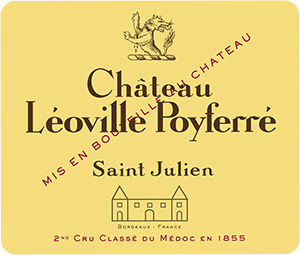| Region | |
|---|---|
| Subregion | France > Bordeaux > Left Bank > St Julien |
| Colour | Red |
| Type | Still |

Owned by the Cuvelier family since 1920, this property over the last 20 years has made some great wines in the Médoc. The 2012, a blend of 61% Cabernet Sauvignon, 27% Merlot, 8% Petit Verdot and 4% Cabernet Franc, is opaque purple, thick-looking, and from bottle much more impressive than it was from barrel. This very extracted, rich, full-bodied, masculine Léoville Poyferré needs a good 5-8 years of bottle age and should evolve well for at least 20-25 years. Loads of blackberry and cassis, crushed rock and graphite notes are present in this medium to full-bodied, impressively concentrated and pure wine. Forget it for a while, as this is one of the bigger, richer Médocs. Drink: 2020 - 2045.
Tasted twice with consistent notes, the Grand Vin is a blend of 62% Cabernet Sauvignon, 32% Merlot and 6% Petit Verdot (there is no Cabernet Franc unlike in 2011.) It was picked between 8th October and 19th October at 36hl/ha, when there was a torrential downpour and two plots were spoiled. The grapes were sorted on an Italian optical sorting machine. There is certainly impressive purity and intensity on the nose with ripe blackberry dark plum and touches of vanilla, a little more exotic than the 2011 this time last year. The palate is medium-bodied with ripe sweet tannins. It is typically relatively modern in style, quite opulent for a 2012 with a rounded, velvety finish with plush new oak (85%). Very fine. Tasted April 2013.
On the nose and palate this red suggests red and black plums with cedar notes and hints of cloves. Full body, firm tannins, fresh acidity and an intense finish. Minerally, too. Polished tannins. Drink in 2020.
Poyferré keeps its generous spirit at 10 years old and has a lovely rich body with raspberry coulis, blackberry and density through the mid palate. The oak majors on grilled cedar and almond, a little dominant and closes things down on the close of play, not quite smoothed out yet suggesting that although you can begin drinking now, it will benefit from another few years in bottle. Harvest October 8 to 19. 80% new oak.
Dark purple. Some real energy hidden in this, not desperately expressive wine. Voluptuous on the palate. Gosh what a lot of effort has gone into this. Full marks for effort… Lots of lusciousness and then it's drawn to a dry close like someone tightening a purse string. Though I'd guess not too much purse-string tightening while making this… Appealing freshness.
This wine seemed primary and not totally filled out or complete. No doubt it will put on some weight given the significant Merlot content in the final blend. There is a certain firmness, stiffness and lack of intensity on the mid-palate, and some tannins kick in in the finish. Nevertheless, there is more to this wine than first meets the palate. It is medium to full-bodied with an opaque color, good ripeness and some attractive weight, but is closed and hard. It needs time to pull itself together, and it should turn out to be an excellent, possibly outstanding effort.
This is chewy with a balanced and polished tannin structure. Full body, with very good depth. Long finish. It keeps going on and on. Very well done. Better than 2011. 62% Cabernet Sauvignon, 32% Merlot, and 6% Petit Verdot. Merlot made it happen here.